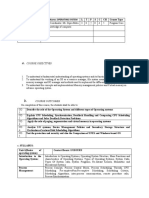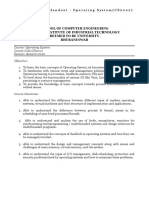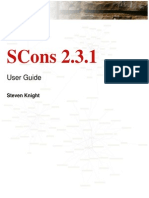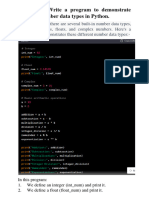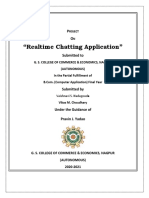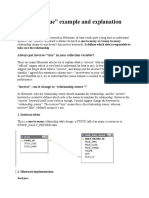0% found this document useful (0 votes)
494 views5 pagesOperating System New Syllabus
The document outlines the course structure for 'Introduction to Operating Systems' and 'Operating System Laboratory' for B.E/B.Tech students, detailing course objectives, content, and outcomes. It covers fundamental concepts such as process management, memory management, and storage management, along with practical lab experiments. The course aims to provide students with a comprehensive understanding of operating systems and hands-on experience with various OS environments.
Uploaded by
arockiaruby13.sCopyright
© © All Rights Reserved
We take content rights seriously. If you suspect this is your content, claim it here.
Available Formats
Download as DOCX, PDF, TXT or read online on Scribd
0% found this document useful (0 votes)
494 views5 pagesOperating System New Syllabus
The document outlines the course structure for 'Introduction to Operating Systems' and 'Operating System Laboratory' for B.E/B.Tech students, detailing course objectives, content, and outcomes. It covers fundamental concepts such as process management, memory management, and storage management, along with practical lab experiments. The course aims to provide students with a comprehensive understanding of operating systems and hands-on experience with various OS environments.
Uploaded by
arockiaruby13.sCopyright
© © All Rights Reserved
We take content rights seriously. If you suspect this is your content, claim it here.
Available Formats
Download as DOCX, PDF, TXT or read online on Scribd
/ 5
















